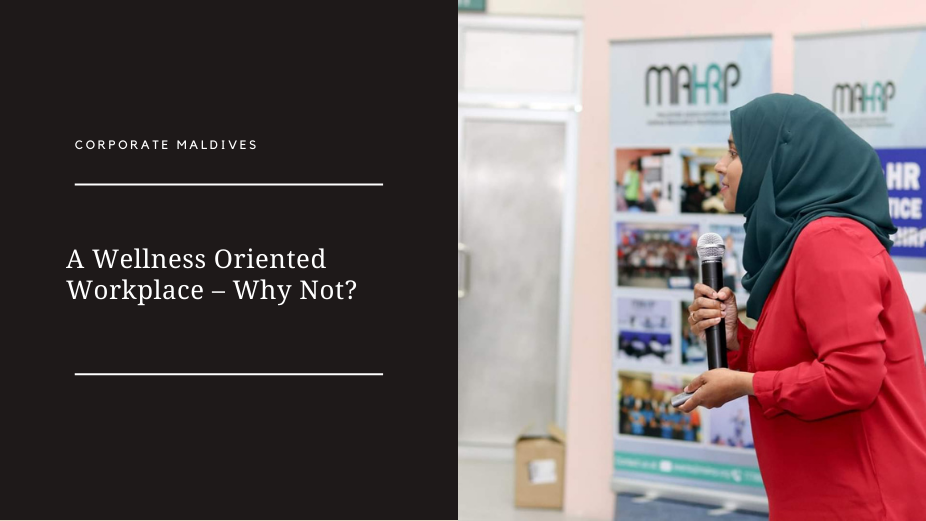
By Guest Author: Hawwa Leesha
“Excelling in studies, grasping every opportunity to learn and add value to myself. Networking, volunteering, reading self-help books, improving literature and language skills, cautious to improve presentation skills, and mindful of professional appearance, day by day increasing employability and self-confidence. Work did not come easy, many passionate young graduates. Fewer opportunities out there. Daily rummaging job websites, hopeful applications, promising interviews and nerve-wracking waiting time for callbacks.
One day the call came, raising hopes and reason to celebrate among friends and family. The taste of independence, the taste of financial security, the taste of getting on my own feet. Work started, orientation completed, work colleagues and station introduced. Optimism was all around me, the sense of being part of a team, the sense of being able to use my skills and knowledge, the joy of learning from expertise on the field.
Tables turned, mismatch of work tasks and work description, mismatch of skills and work assigned, dullness due to lack of work, apprehension due to lack of resources and guidance. Toxic work environment, unfair competition, unethical decision making and unanticipated harassment. Having difficulty managing work-life balance, lack of boundaries of professional and personal life leading sleep deprivation and unhealthy eating and lifestyle.
Passion slowly turning into monotony, self-confidence diminishing into self-doubt, inspired workplace changed into a frightening cave.”
Organizations lose capable, promising and skilled workers due to the inability to provide them a virtuous work environment. Along with satisfactory salaries and passionate work, employees need a work environment that focuses on employee’s overall wellness and wellbeing adopting zero tolerance to violence and any form of discrimination. A work environment that not only prioritizes contributing to the financial stability of the worker but the emotional, psychological and social wellbeing of their workers.
For an employee, the workplace is where they spend the majority of their day. A workplace is the backbone for their livelihood. A workplace is where they hope to be granted the ability to portray their capabilities and skills. Workers report high levels of absenteeism and in fact presenteeism, if the work-life balance and healthy life choices are not encouraged at the workplace. Attractive salaries, passionate work will not suffice in maintaining the workers in the organization.
Gone are the days when organizations can maintain their workforce by just providing workers attractive financial incentives and challenging work assignments. Managers and supervisors are constantly brainstorming innovative ways to enhance wellness and wellbeing at the workplace. Healthy and happy workers work as a positive multiplier, contributing to enhancing a supportive, cohesive and compassionate workplace.
Allowing workers flexibility, allowing workers room to voice out their ideas, allowing space for them to boost their creativity and providing them growth opportunities can go a long way. Recruiters should be nudging employees towards a healthy lifestyle and coming up with customs and routines to create a mindful work environment meanwhile emphasizing the importance of a calm state of mind.
Firms are moving from solely viewing financial growth as “the” success indicator and towards building thriving employees who are not just satisfied but keen on taking the organization to the next level. Firms are moving from top-down harsh unified procedures to bottom-up exclusive rules and regulations which are more tolerant, personalized and human.
Wellness engagement officers are recruited by organizations to jumpstart wellness-oriented programs and culture. From healthy eating patterns to morning yoga to individualized therapy and assistance to workers’ concerns and emotional wellbeing. Policies implemented to create a cohesive work environment to develop the social well-being of workers. Bringing state-of-the-art changes of adopting wellness in daily work life and work tasks. Moving from conference room meetings, to walk in the garden meetings, moving morning briefings to in-office circle groups or support groups aligned with morning stretches and mindfulness. Some set flexi-working hours proving their compassion towards workers priorities such as family and children. A wellness-oriented workplace does not require massive investments, long procedures or world-class infrastructure, small minimal changes could maintain, motivate and engage the workforce and reduce massive amounts of loss due to high turnover. It only needs a change in the viewpoint towards creating a wellness-oriented environment for their beloved team members.








